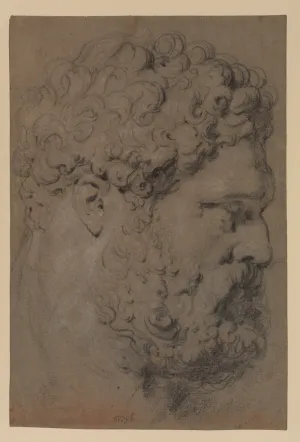Peter Paul Rubens: Head of the Farnese Hercules
Peter Paul Rubens (1577–1640)
Head of the Farnese Hercules
c. 1608–10
Black chalk, heightened with white chalk, on gray paper
Samuel Courtauld Trust: Princes Gate Bequest, 1978
In the 1540s fragments of an enormous classical statue of Hercules were excavated in Rome. Reassembled at the Palazzo Farnese, the sculpture represented an ideal of heroic masculinity and quickly became a favorite subject for artists. Rubens studied the work during his stay in Italy between 1601 and 1608. He may, however, have made this close-up view of the mighty head from one of the many casts and copies that were produced.

